At the 4 COC+R National Symposium, panel discussions were held on two themes.In Part 2, Mr. Hiroshi Kamiyama, Director of the Ministry of Education, Culture, Sports, Science and Technology, took the stage on the theme of "Organizations that self-run 'co-creative learning' between companies and students." Associate Professor Ayumu Sugiyama of the university and Mr. Tatsuo Katsuta of the Shinshu University Career Education Support Center shared the concept and direction of future self-propulsion, and the discussion developed while extracting various perspectives on self-propulsion. rice field.
(Facilitator: Specially Appointed Professor Mikio Yamamoto, Shinshu University)
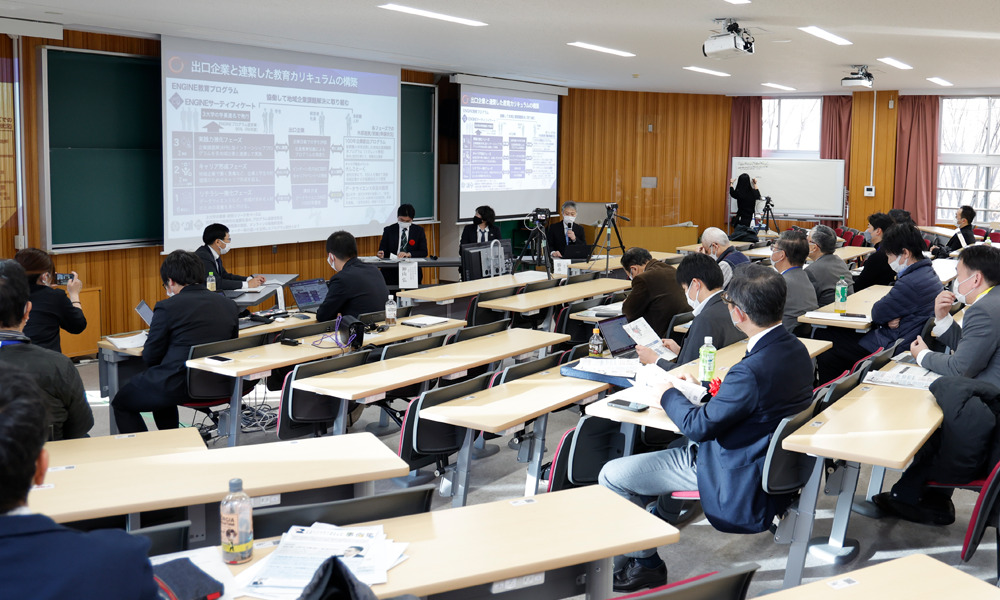
Three-university collaborative ENGINE education program - Shinshu University
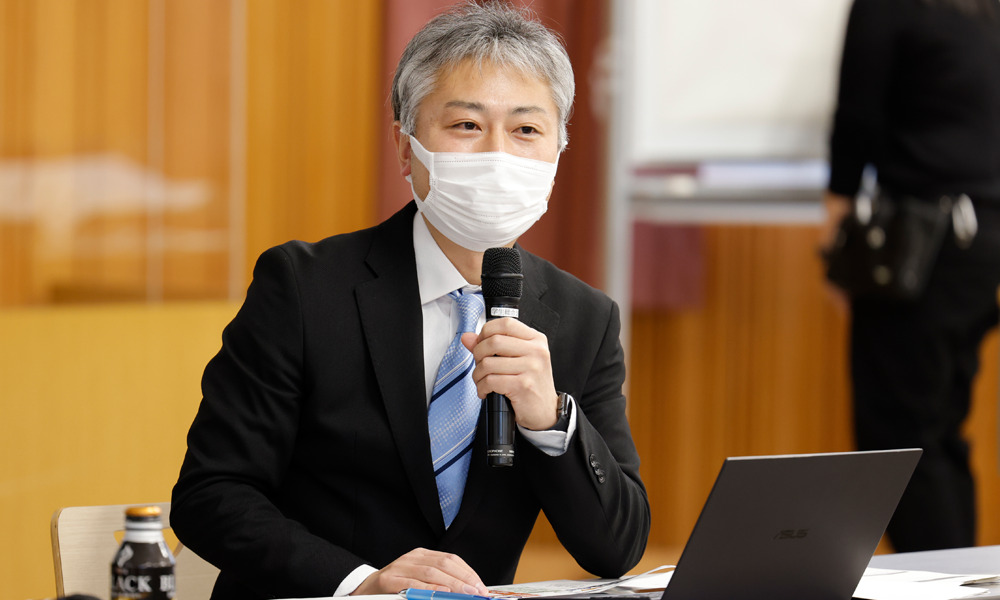
First, presentations were made on the projects that each university is working on.First, Mr. Tatsuo Katsuta from Shinshu University explained about the ENGINE education program.This is a cross-prefectural collaboration between Shinshu University, Toyama University, and Kanazawa University. It started three years ago and has gone through three phases: the literacy enhancement phase, the career development phase, and the practical skills enhancement phase.These steps are shared at each university, courses are created, and students are recruited to cultivate practical skills.
As an event, the core of the event is a "big job tour" where you can get to know companies inside and outside the prefecture and develop your career.It is held every year according to the three phases mentioned above, and is run by students.It is one of the factors to realize self-running by taking the exhibition fee from the company.And I would like to continue this kind of place and increase opportunities for ENGINE internships, recurrent, and reskilling while making money.In the future, Mr. Katsumata says that it will be necessary to create a flow that allows companies to share the necessary human resources and skills, and to create a system that can be implemented together with universities and students.
In this way, in order to shift from short-term self-running to long-term "coordination", the challenges are a system to earn personnel expenses for program maintenance, a system to create an environment for human resource development, and a system that is restricted only within the university. I mentioned the creation of an organization that does not exist.The goal is to make the system self-propelled.Furthermore, he said that although universities are good at research and technology development, he would like to provide society and companies with opportunities that are similar to big projects, and develop human resource development as a service.
Efforts toward self-propelled Pentas Yamanashi ──Yamanashi Prefectural University
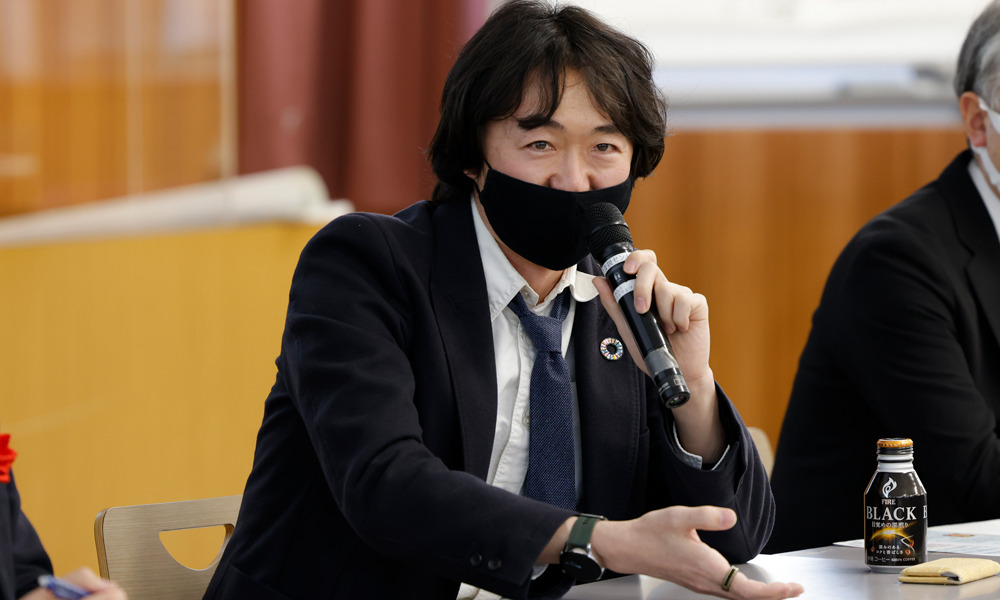
Associate Professor Ayumu Sugiyama of Yamanashi Prefectural University explained the "Pentas Yamanashi" project.We introduced three initiatives for self-propelled vehicles.
The first is that the position of "practical subjects, skill subjects, and VUCA subjects" in the liberal arts education curriculum in 1, when COC + R started, was moved from free subjects to liberal arts subjects and basic subjects in 3. matter.Furthermore, from 4 onwards, in cooperation with liberal arts education reform, we will promote the construction of a new liberal arts curriculum, and introduced efforts to increase the possibility of self-propelled education.
The second is the expansion of donation accounts.In 2, one subject was funded by the Yamanashi Tourism Promotion Organization.In 4, we plan to increase the number of subjects to two.We also plan to introduce two new courses for donation accounts by banks and food companies.
The third is the collection of tuition fees from outside.Yamanashi Tourism Promotion Organization lectures are available free of charge for member companies.In addition to that, the program was open to working adults and high school students, and there was business income from the tuition fees.We plan to increase this number, especially for high school students, and expect further expansion in conjunction with the reform of connecting high schools and universities.
After this, Associate Professor Sugiyama ended his presentation by continuing that he wanted to talk about the essentials, not just numbers.
What COC+R aims for self-propulsion ──Ministry of Education, Culture, Sports, Science and Technology
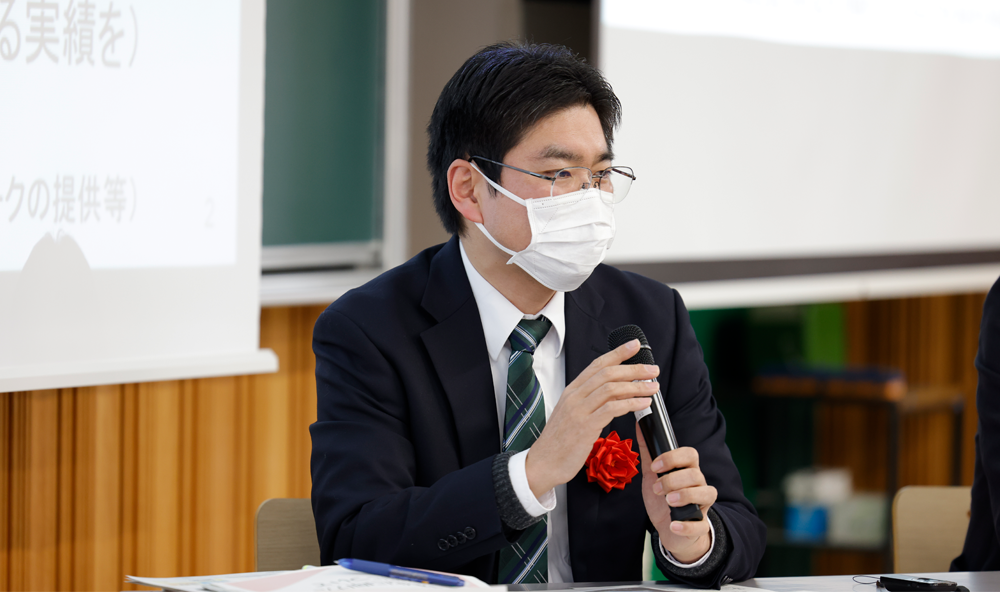
Next, Hiroshi Kamiyama, Director of the General Education Policy Bureau of the Ministry of Education, Culture, Sports, Science and Technology, said that the goal of COC+R is to develop and produce the human resources that the region ultimately wants, I prefaced that this will also be an ongoing effort. In five years, the university will create a system.We will create and maintain a system of collaboration and cooperation with people outside the university as well as within the university.He continues that in order to produce human resources, produce results, and obtain budgets, it is necessary to gain the understanding of the parties concerned.To that end, it is important to gather the good points and improvement points of the program from graduates and related companies and turn the PDCA cycle.
As a specific measure for self-propelled operation, it is important to secure a budget and financial resources.In addition to securing funds within the university, there are other ways to utilize business income such as exhibition fees from major events and Pentas Yamanashi tuition fees, support from local companies, and subsidies from local governments.
As the main body, of course, the university will be the core, and through the provision of human resources and advice to SMEs, they will understand the value of education at the university.Universities must be the pillars of efforts to recurrent and reskilling, the importance of which is now recognized.He said that in this way, solving local problems and joint research could become the foundation for self-propelled technology.
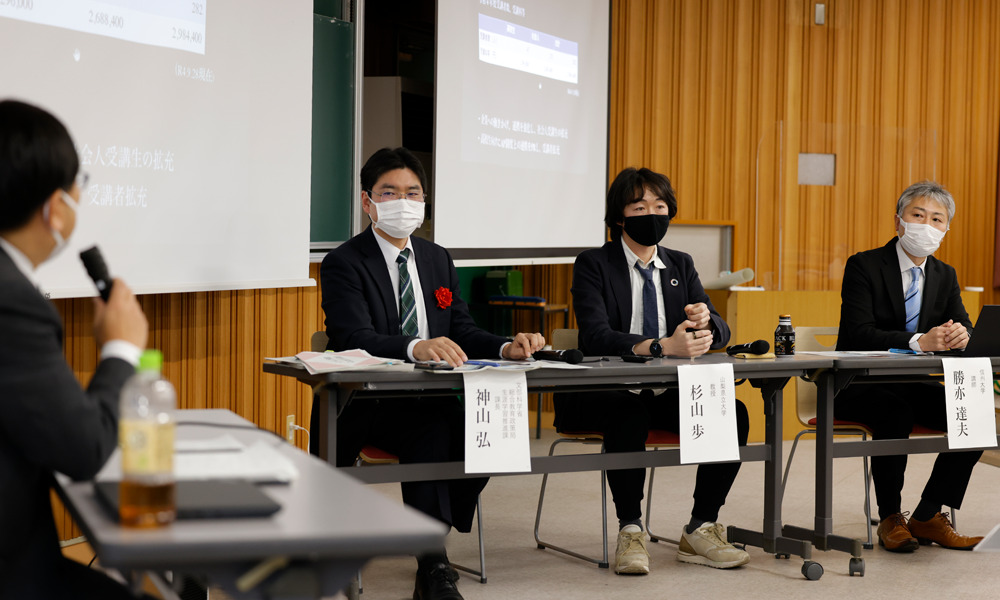
What are the issues and new findings that have come to light? ──Summary of the discussion
After presentations by the three panelists, a deeper discussion was held from their respective positions.We will introduce the essence of each panelist.
Mr. Tatsuo Katsuta
When it comes to self-driving, it is easy to maintain each step, but people are important to make progress.Companies and universities cannot function without people.As the program grows, I want people to think that it's interesting, to provide human resources, material support, and field support.It is ideal to circulate with nature and become self-propelled.
When it comes to visualization, it becomes a discussion of KPIs (Key Performance Indicators).But before that, I think it would be KGI (Key Goal Achievement Index). If we get caught up in KPIs, in other words, the number of participants, we forget that even one or two people will be able to change society.It is important to properly explain to both the company and the students what the purpose of the project is and to gain their understanding.If it benefits the other party, trust will be born, and it will eventually become social capital.
I would like to connect to the point that what cannot be done by the university alone can be done by working together with the prefecture and the national government.In this co-creation study, I need to be more conscious of circulation, so that I can make seeds and grow them again.I want to go out to various places and collect information about how to circulate the business and the people.
Associate Professor Ayumu Sugiyama
As a long-term internship for companies and students, 4 projects have been launched at four universities in Kofu city for project-type experiential learning.We will develop human resources to revitalize the region, supply such human resources, and strive for sustainability.If we don't take root in the community as social capital while maintaining that passion, we won't be able to continue.
Co-creation is "co-create".If local universities, companies, and local governments can think of this as a place for co-creation, they can increase their competitiveness without incurring costs for human resource development.
The students I assisted during the COC+ program continue to attend even after they become working adults.The emergence of such OBs and OGs is also social capital.In order to become a place where people want to go to university to study again, we have to work on it for about 10 years.
Hiroshi Kamiyama
Regarding the use of alumni and alumni, I would like you to come and learn again, other than donations and other support.Also, it would be nice to receive opinions and information such as what was good and what was not good about having an awareness of issues, and what you want to learn in the future.While giving juniors a sense of participation, it will also be possible to communicate between different industries.
If the university's efforts gain the understanding of the local community, I think there will be times when we will cooperate, including with money.Then self-driving is realized.The Ministry of Education, Culture, Sports, Science and Technology also wants to give proper support.
Specially Appointed Professor Mikio Yamamoto
I would like to cooperate with companies and co-create, and look at the long-term vision and goals.If it becomes social capital, not only money but also people's intentions will generate vitality.This will be a new type of chamber of commerce in the region.The creation of the organization is important, and it is better to throw away the consciousness of maintaining what was made with the subsidized project.
For example, the exhibition fee for the "Great Job Talk" should be treated as an investment. BS (Balance Sheet) is more appropriate than PL (Profit and Loss Statement).It's an investment in hiring top talent.
The use of OBs and OGs that came out of the vision we are aiming for is a direction that has been concretely seen in today's talk.There are tens of thousands of people who have been helped by the university.In addition to re-learning, many people may want to consider making a donation. We also need to devise ways to create alumni associations and alumni associations, and it would be good to utilize the strength of our network.
When thinking about the role of universities in the future, it would be ideal to have a model that forms social capital with organizations inside and outside the university, as I mentioned today.I think I was able to talk about a company as a companion for self-propelled.
Panel discussion 1 ended with various cases and opinions in one hour.
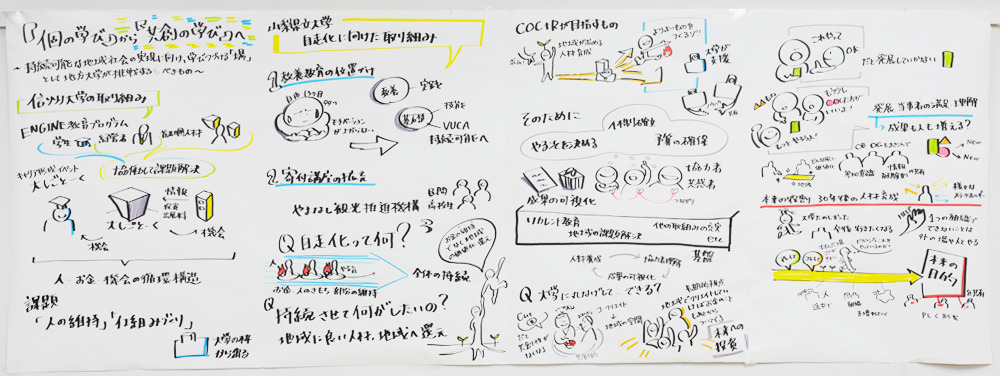
*The video of the symposium is open to all COC+R members.
●Symposium video list page
https://coc-r.jp/archives/

